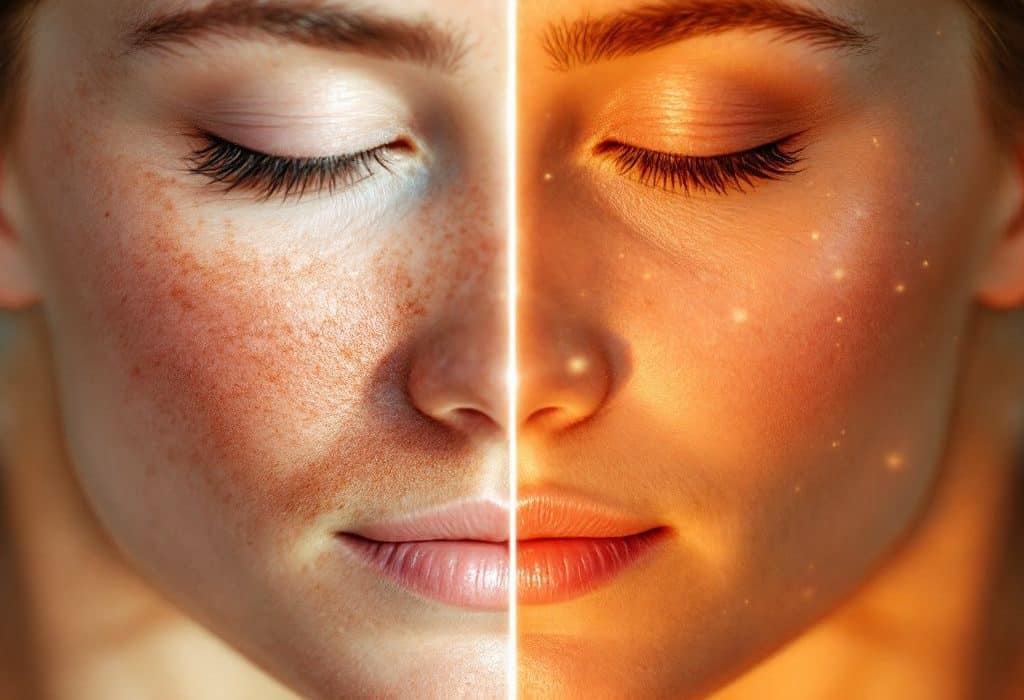Have you ever wondered why some skincare products just don’t seem to work, no matter how religiously you apply them? I hear you. It’s incredibly frustrating. But, trust me on this one, understanding the science behind what you’re slathering on your face can make all the difference. And that’s where skin identical lipids come into play. Let’s dive into the fascinating world of ingredient science, shall we?
What Exactly Are Skin Identical Lipids?
Picture your skin as a fortress. Skin identical lipids are the building blocks needed to maintain the integrity of the walls. They’re naturally occurring fats in our skin that help keep it robust, hydrated, and yes, beautifully youthful. Fancy names like ceramides, cholesterol, and fatty acids fall under this category. These components mimic the lipids already present in your skin, hence the term “identical”. By incorporating them into skincare products, we give our skin exactly what it needs to repair and replenish itself.
The Science-y Stuff: Breaking It Down
Okay, I know some eyes might glaze over here, but let’s keep it light. Imagine your skin barrier as a brick wall. The “bricks” are your skin cells, and the “mortar” holding them together comprises the lipids. When this barrier is compromised, skin problems like dryness, irritation, and sensitivity crop up. Makes sense, right?
Now, what do skin identical lipids do? They’re essentially perfect matches for the natural lipids already existing in your skin. So, when we topically apply these ingredients, they seamlessly integrate with the skin’s existing structure. Think of this like patching a road with the exact same material it was originally made from versus a shoddy mismatch that just doesn’t hold up. A proper barrier match is crucial—it’s all about maintaining and restoring that barrier.
Why Are Skin Identical Lipids Important?

Alright, fast forward to why you should care: using products with these lipids is like replenishing the skin’s natural lipids, helping strengthen the barrier and lock in moisture. This is especially crucial if you’re dealing with damaged skin barriers, which, let’s face it, happens more often than we realize thanks to harsh weather, pollution, aging, and even rough skincare routines.
The Aging Connection
Here’s a no-brainer: as we age, the natural lipid content in our skin dwindles. Yep, that’s a fact we wish we could overlook! Less natural lipid means a weaker barrier, more water loss, and hello, dry skin and wrinkles. But this is where skin identical lipids do their hero work, aiding in replenishing the lost structures and keeping the skin plump and resilient. Sounds like a win, right?
How to Incorporate Skin Identical Lipids in Your Routine
Now, let’s get practical. You’re not just here for the why, you want the how, right? Incorporating these powerful lipids into your routine doesn’t have to be an elaborate affair. Here’s a simple step-by-step to help you out:
- Identify Your Need: First things first, evaluate your skin. If you’re dealing with dryness, sensitivity, or signs of aging, these lipids could be gold for you.
- Choose the Right Product: Look for moisturizers or serums specifically formulated with ceramides, cholesterol, and fatty acids. Many brands highlight their use of skin identical phospholipids on the label, so they’re not hard to spot!
- Layering Wisely: Use these products after cleansing and toning. The idea is to put them right after any water-based serums but before heavier, more occlusive moisturizers.
- Consistency is Key: Stick with it. Just like watering a plant, you need regular application to see results. Give it time – it’s worth it.
Common Scenarios Where They Shine:

- Post-Treatment Care: Whether it’s post-laser, peel, or any form of treatment, skin identical lipids help in soothing and reinforcing the barrier faster.
- Extreme Weather: Both the biting winter and sizzling summer can deplete our skin’s natural defenses. Consider upping your lipid game during these times.
Comparison: Skin Identical Lipids vs. Other Ingredients
| **Criteria** | **Skin Identical Lipids** | **Non-Identical Ingredients** |
|---|---|---|
| **Compatibility** | Seamlessly integrates with skin’s natural barrier | Might offer temporary relief or hydration |
| **Effectiveness** | Enhances, restores, & maintains natural barrier | Dependent on stripping or adding layers |
| **Long-term Benefits** | Improves overall skin resilience and moisture retention | Variable results, often needing more regular use |
| **Suitable For** | All skin types, especially dry and aging | Could cause irritation, especially to sensitive skin |
A Few Missteps to Avoid
Let’s not fall into common traps. One mistake is assuming more is better—heavy-handed slathering can clog pores. Another is skipping other crucial steps like SPF. Remember, our skin has a mind of its own, and coating it with even the best ingredients without balancing your regime could backfire.

Casual Asides: Love What Works for You
Here’s the tea—not all buzzwords work for everyone, but skin identical lipids have a track record because they’re giving your skin exactly what it needs. It’s like meeting an old friend and rekindling a connection; it just feels right.
The Role of Barrier Match
Skin identical lipids are the gold standard when it comes to matching the barrier compositional nuances. This is why they’re brilliant at this job over other moisturizers that might merely coat the skin. Trust me, showing your skin the true match it deserves makes a big difference in its overall glow and health.
Wrapping it All Up
So, there you have it. Understanding skin identical lipids isn’t just about layering another product on top of what you’re already using; it’s about restoring what your skin has naturally lost over time and exposure to elements. Whether you’re facing the relentless fight against aging or just trying to maintain a healthy glow, there’s a good chance these savvy ingredients can lend a helpful hand.
Want to give them a try? I reckon you’d be glad you did—it might be the key to unlocking the best version of your skin.
Give yourself the gift of conversation between your skin and its best compatriots. Here’s to glowing, resilient skin that’s as kind to you as you are to it!
Frequently Asked Questions
What are skin-identical lipids?
Skin-identical lipids are compounds that have the same molecular structure as the natural lipids found in the skin barrier. These include ceramides, cholesterol, and fatty acids, which are essential for maintaining the integrity and function of the skin barrier[5][2][4>.
How do skin-identical lipids benefit the skin?
Skin-identical lipids help to restore and strengthen the skin barrier, improving skin compatibility and reducing the risk of skin conditions such as atopic dermatitis and psoriasis. They also enhance the delivery of other active ingredients into the skin and provide long-lasting moisturization and protection[1][2][5>.
What types of skin-identical lipids are commonly used in skincare?
Commonly used skin-identical lipids include ceramides, which can be derived from plants (phytoceramides) or synthesized to match the natural ceramides in the skin. Other important lipids are cholesterol and fatty acids, which together with ceramides, form the bulk of the skin’s lipid layer[2][5][4>.
How can I identify skincare products containing skin-identical lipids?
You can identify skincare products containing skin-identical lipids by looking for ingredients like ceramides, phosphatidylcholine, cholesterol, and fatty acids in the product’s INCI list. Products labeled as “biomimetic” or “skin-identical” often contain these ingredients, which mimic the natural structure of the skin barrier[1][2][5>.
References


